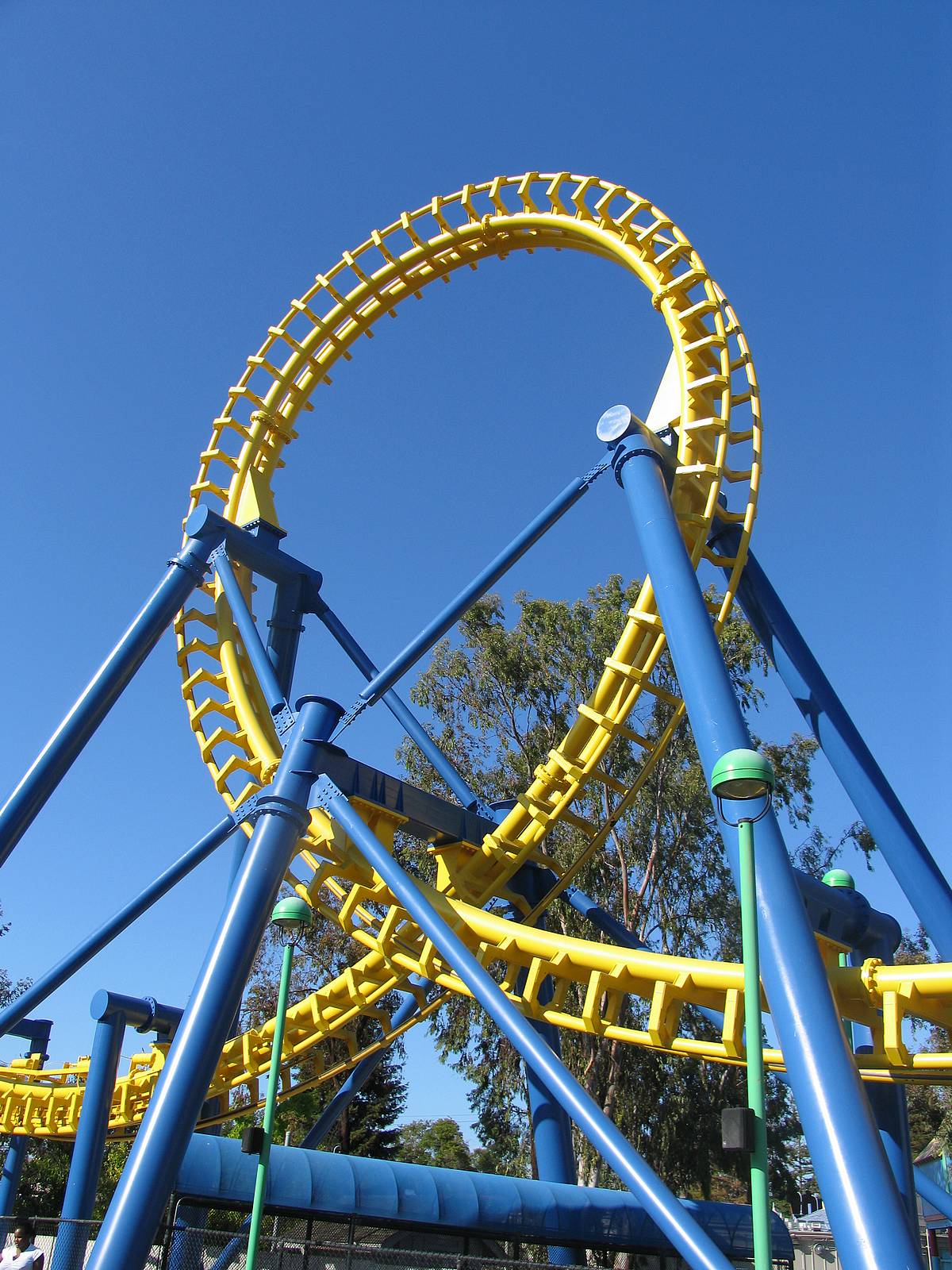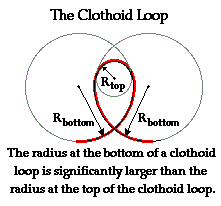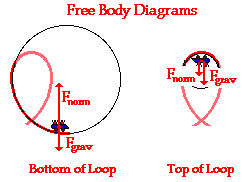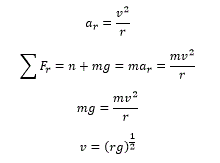More on Roller Coasters
Loops
The
thrill of hanging upside down traveling in a
circle makes the vertical loops one of the
funnest parts of the roller coaster ride. If
you look closely at modern loops on roller
coasters, you will notice that they are not
perfectly circular, but they look more like
an upside down tear drop. This
tear drop shape is called a clothoid loop,
which is a shape that has a larger radius of
curvature at the bottoms and the sides of
the loop and a smaller radius at the top.
This is shown in the two pictures below. These
vertical loops used to be circular, and were
also unsafe. High initial speeds needed to
make it around to loop would produce an
unsafe amount of normal force felt by the
passengers at the bottom, and if the
velocity was too small the cars would not
make it around the circle.

 


It's important to note that the velocity at the
bottom will be different than the velocity at
the top due to the conservation of energy. Look
at the second term for the normal force, if a
larger radius is used for the bottom of the loop
compared to the radius used for the top, then
the second term will be smaller since r is in
the denominator, and therefore there will be a
less normal force felt by the passengers.
|